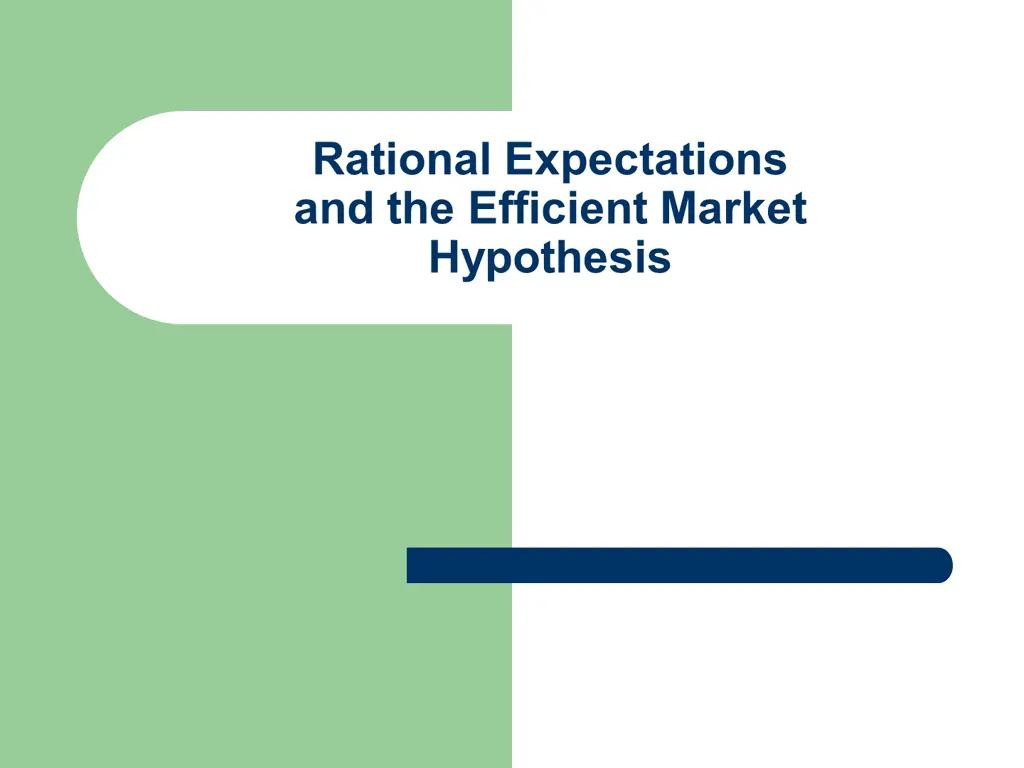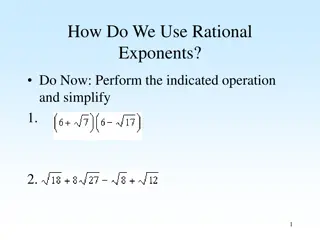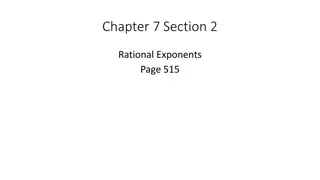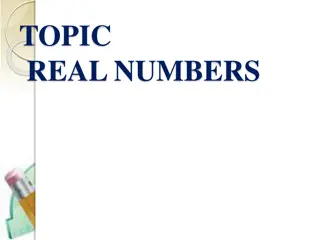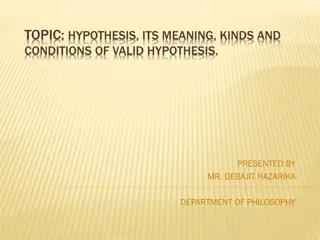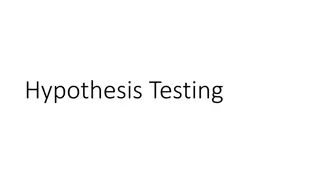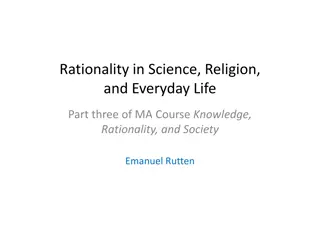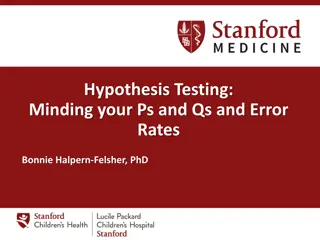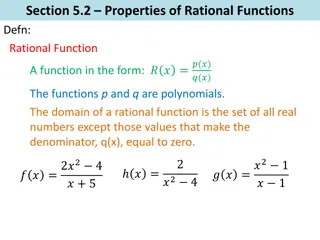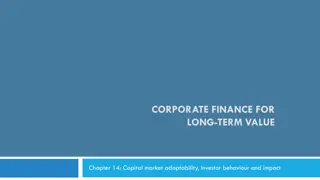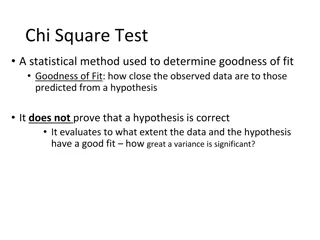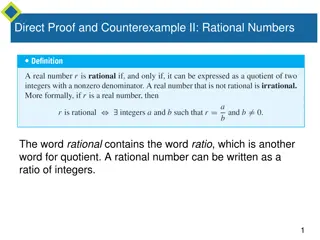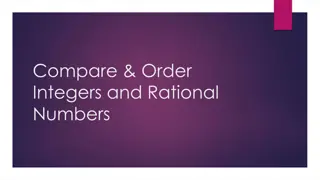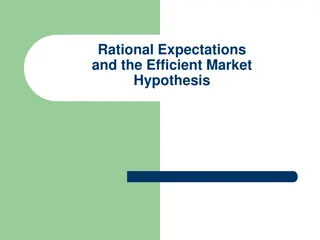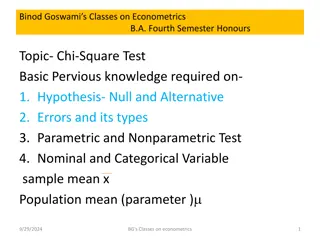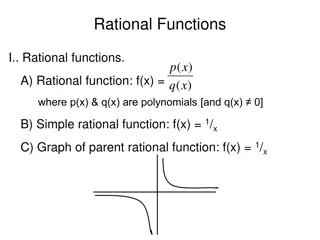Rational Expectations and the Efficient Market Hypothesis
The importance of expectations in various sectors and markets of the economy, including asset demand, risk and term structure of interest rates, asymmetric information and financial structure, financial innovation, bank management, money supply process, Federal Reserve, foreign exchange market, demand for money, aggregate demand, aggregate supply, and inflation.
- rational expectations
- efficient market hypothesis
- asset demand
- risk
- term structure
- asymmetric information
- financial innovation
- bank management
- money supply process
- Federal Reserve
- foreign exchange market
- demand for money
- aggregate demand
- aggregate supply
- inflation
Download Presentation

Please find below an Image/Link to download the presentation.
The content on the website is provided AS IS for your information and personal use only. It may not be sold, licensed, or shared on other websites without obtaining consent from the author. Download presentation by click this link. If you encounter any issues during the download, it is possible that the publisher has removed the file from their server.
E N D
Presentation Transcript
Rational Expectations and the Efficient Market Hypothesis
Role of Expectations Expectations are important in every sector and market in the economy 1. Asset demand and the determination of i 2. Risk and term structure of i 3. Asymmetric information and financial structure 4. Financial innovation 5. Bank management 6. Money supply process 7. Federal Reserve 8. Foreign exchange market 9. Demand for money 10. Aggregate demand 11. Aggregate supply and inflation
Theory of Rational Expectations Expectations will be identical to optimal forecasts using all available information Even though a rational expectation equals the optimal forecast using all available information, a prediction based on it may not always be perfectly accurate It takes too much effort to make the expectation the best guess possible Best guess will not be accurate because predictor is unaware of some relevant information
Formal Statement of the Theory = e of X X = e expectation of the variable that is being forecast = optimal forecast using all available information X X of
Implications If there is a change in the way a variable moves, the way in which expectations of the variable are formed will change as well The forecast errors of expectations will, on average, be zero and cannot be predicted ahead of time
Efficient Markets Application of Rational Expectations Recall The rate of return from holding a security equals the sum of the capital gain on the security, plus any cash payments divided by the initial purchase price of the security. P R = + + P C 1 t t P t = the r ate of return on the security t t or dividend) made during the holding period R = price of the security at time + 1, the end of the holding period = price of the security at time , the beginning of the holding period = cash payment (coupon P P + 1 t t C
Efficient Markets (contd) At the beginning of the holding period, we know is unknown and we must form an expectation of it. The expected return then is P R = and . P C t P + 1 t e ++ + P C e 1 t t P t Expectations of future prices are equal to opti all currently available information so P + mal forecasts using = = e of + e of P R R 1 1 t t * e Supply & demand analysis states will equal the equilibrium return R = so R R R * of
Efficient Markets Current prices in a financial market will be set so that the optimal forecast of a security s return using all available information equals the security s equilibrium return In an efficient market, a security s price fully reflects all available information
Rationale Rof R* Pt Rof Rof R* Pt Rof until Rof= R* In an efficient market, all unexploited profit opportunities will be eliminated
Forecasting Financial Variables Stocks Buy low sell high? Buy on the way up? Interest Rates They are really low they must go up? Do financial variables return to normal levels? Are they predictable? What do you use to forecast? Sample mean? Value of last observation? Predicting the future.
Case Study Predicting GM s Stock Price Technical Analysis Fundamental Analysis
A Random Walk Random walk y_t=y_t-1+e_t 4 2 0 -2 -4 -6 -8 -10 -12 1 5 9 13 17 21 25 29 33 37 41 45 49 53 57 61 65 69 73 77 81 85 89 93 97 101 Time
Forecast y_t=y_t-1+e_t True mean=0, sample mean=-4.39 4 2 0 -2 -4 Forecast -6 -8 -10 -12 1 5 9 13 17 21 25 29 33 37 41 45 49 53 57 61 65 69 73 77 81 85 89 93 97 101 105 109 113 Time
Forecast y_t=y_t-1+e_t True mean=0, sample mean=-4.39 4 2 0 -2 -4 y = -0.0043x - 4.0645 Forecast -6 y = -0.058x -8 -10 -12 1 5 9 13 17 21 25 29 33 37 41 45 49 53 57 61 65 69 73 77 81 85 89 93 97 101 105 109 113 Time
Stationary Autoregressive Process y_t=.9y_t-1+e_t True mean=0, sample mean=-0.72 6 4 2 0 -2 -4 -6 -8 1 5 9 13 17 21 25 29 33 37 41 45 49 53 57 61 65 69 73 77 81 85 89 93 97 101 Time
y_t=.5y_t-1+e_t True mean=0, sample mean=-0.07 4 3 2 1 0 -1 -2 -3 -4 1 4 7 10 13 16 19 22 25 28 31 34 37 40 43 46 49 52 55 58 61 64 67 70 73 76 79 82 85 88 91 94 97 100 Time
y_t=y_t-1+.01trend+e_t 60 50 40 30 20 10 0 1 4 7 10 13 16 19 22 25 28 31 34 37 40 43 46 49 52 55 58 61 64 67 70 73 76 79 82 85 88 91 94 97 100 -10
y_t=.9y_t-1+.01trend+e_t 14 12 10 8 6 4 2 0 1 4 7 10 13 16 19 22 25 28 31 34 37 40 43 46 49 52 55 58 61 64 67 70 73 76 79 82 85 88 91 94 97 100 -2 -4 -6 -8
y_t=.01trend+e_t 4 3 2 1 0 1 4 7 10 13 16 19 22 25 28 31 34 37 40 43 46 49 52 55 58 61 64 67 70 73 76 79 82 85 88 91 94 97 100 -1 y = 0.0099x -2 -3
Evidence in Favor of Market Efficiency Having performed well in the past does not indicate that an investment advisor or a mutual fund will perform well in the future If information is already publicly available, a positive announcement does not, on average, cause stock prices to rise Stock prices follow a random walk Technical analysis cannot successfully predict changes in stock prices
Evidence Against Market Efficiency Small-firm effect January Effect Market Overreaction Excessive Volatility Mean Reversion New information is not always immediately incorporated into stock prices
Behavioral Finance Ultimatum Game
Behavioral Finance The lack of short selling (causing over-priced stocks) may be explained by loss aversion The large trading volume may be explained by investor overconfidence Stock market bubbles may be explained by overconfidence and social contagion
Evidence on Efficient Markets Hypothesis Favorable Evidence 1. Investment analysts and mutual funds don t beat the market 2. Stock prices reflect publicly available information: anticipated announcements don t affect stock price 3. Stock prices and exchange rates close to random walk If predictions of P big, Rof> R* predictions of P small 4. Technical analysis does not outperform market Unfavorable Evidence 1. Small-firm effect: small firms have abnormally high returns 2. January effect: high returns in January 3. Market overreaction 4. Excessive volatility 5. Mean reversion 6. New information is not always immediately incorporated into stock prices Overview Reasonable starting point but not whole story
Implications for Investing 1. Published reports of financial analysts not very valuable 2. Should be skeptical of hot tips 3. Stock prices may fall on good news 4. Prescription for investor 1. Shouldn t try to outguess market 2. Therefore, buy and hold 3. Diversify with no-load mutual fund Evidence on Rational Expectations in Other Markets 1. Bond markets appear efficient 2. Evidence with survey data is mixed Skepticism about quality of data 3. Following implication is supported: change in way variable moves, way expectations are formed changes
Application Investing in the Stock Market Recommendations from investment advisors cannot help us outperform the market A hot tip is probably information already contained in the price of the stock Stock prices respond to announcements only when the information is new and unexpected A buy and hold strategy is the most sensible strategy for the small investor
Hayek: The Fatal Conceit "The curious task of economics is to demonstrate to men how little they really know about what they imagine they can design."
Rational Expectations: Implications for Policy
Econometric Policy Critique Econometric models are used to forecast and to evaluate policy Lucas critique, based on rational expectations, argues that policy evaluation should not be made with these models The way in which expectations are formed (the relationship of expectations to past information) changes when the behavior of forecasted variables changes The public s expectations about a policy will influence the response to that policy 31
New Classical Macroeconomic Model All wages and prices are completely flexible with respect to expected change in the price level Workers try to keep their real wages from falling when they expect the price level to rise Anticipated policy has no effect on aggregate output and unemployment Unanticipated policy does have an effect Policy ineffectiveness proposition 32
Implications for Policymakers Distinction between effects of anticipated and unanticipated policy actions Policymakers must know expectations to know outcome of the policy Nearly impossible to find out expectations People will adjust expectations guessing what the policymaker will do Design policy rules so prices will remain stable 36
New Keynesian Model Objection to complete wage and price flexibility Labor contracts Reluctance by firms to lower wages Fixed-price contracts Menu costs Model assumes rational expectations but wages and prices are sticky 37
Implications for Policymakers There may be beneficial effects from activist stabilization policy Designing the policy is not easy because the effect of anticipated and unanticipated policy is very different Must understand public s expectations 39
Stabilization Policy Traditional It is possible for an activist policy to stabilize output fluctuations New Classical Activist stabilization policy aggravates output fluctuations New Keynesian Anticipated policy does matter to output fluctuations More uncertainty about the outcome than Traditional 44
Anti-Inflation Policy in the Three Models 1. Ongoing , so moving from AD1to AD2, AS1to AS2, point 1 to 2 2. Anti- policy, AD kept at AD1 Traditional Model (a) 1. AS to AS2whether policy anticipated or not; go to 2', Y , New Classical Model (b) 1. Unanticipated: AS to AS2; go to 2', Y , 2. Anticipated: AS stays at AS1; stay at 1, Y unchanged, to zero New Keynesian Model (c) 1. Unanticipated: AS to AS2; go to 2', Y , 2. Anticipated: AS to AS2''; go to 2'', Y by less, by more 48
Credibility and the Reagan Deficits Reagan deficits may have made 1981 82 recession worse after Fed anti- policy Analysis 1. Anti- policy kept AD at AD1 2. Fed s anti- policy less credible, so AS kept rising to AS2 3. Go to 2' in panels (b) and (c); Y by more than if anti- policy credible Impact of Rational Expectations Revolution 1. More aware of importance of expectations and credibility 2. Lucas critique has caused most economists to doubt use of conventional econometric models for policy evaluation 3. Since effect of policy depends on expectations, economists less activist 4. Policy effectiveness proposition not widely accepted, most economists take intermediate position that activist policy could be beneficial but is tough to design 49
Credibility in Fighting Inflation Public must expect the policy will be implemented New Classical Cold turkey New Keynesian More gradual approach Actions speak louder than words 50
